Lenghtonomics
Lengthonomics and the Benefits of Reach
Top of rack switching brought about shorter length system interconnect cables to connect servers in the same rack to a switch in the same rack or an adjacent rack. The arguments for short reach cables stemmed primarily as an avoidance to blobs of structured cabling that were caused by data centers that grew out of need rather than planning, insufficient room for larger diameter category 6A cables in pathways and cabinets, and poor change management. At the time, moving to fiber in pathways and copper in cabinets seemed to make perfect sense. However, this was not true in all cases.
While hyperscale data centers and data centers that can support higher kW per cabinet can make use of all the switch ports in a cabinet, data centers at lower densities can’t. So those lower density data centers began using longer reach cables and connecting other adjacent cabinets, or in some cases Active Optical Cables (AOC) to reach end of row cabinets and those elsewhere in the data center taking advantage of the “lengthonomics” of longer cables which open up switch ports to a greater number of servers in a more cabinets than a short reach cable allows. However, stringing longer cables without proper pathway planning can lead to a mess of cables which is exactly what the short reach cables were supposed to stop.
A Blast from the Past
Data Centers used to have main (central) distribution areas for networking much as they still do for storage arrays. Today you see a mix of solutions in most data centers. The tide in many data centers is shifting back to more centralized solutions as budget savvy employees pay attention to the benefits of reach. This is also true for fiber in the riser systems of intelligent buildings and even for extended reach structured copper products (like the GameChanger). Longer lengths of cable allow you to purchase fewer pieces of intermediate electronics and eliminate the need for intermediate areas requiring power and equipment. That is "lengthonomics."
So how does one determine the lengthonomics of any cable run? It is important to take into account the entire communications channel inclusive of all active equipment contained within the channel. In addition to the equipment included, risk factors should be part of the decision as the more equipment you have, the more potential points of failure exist. The total power consumption of all active equipment is another factor in the equation.
Fiber Lengthonomics
For fiber applications, multimode fiber has had an advantage due to the lower cost of the electronics. So, from point A to point B inclusive of the electronics, the channels were significantly less expensive. When examining newer fiber over increasingly higher speeds, there is a diminishing advantage for mulitmode fiber. Hyperscale data centers consume a lot of single mode electronics which has driven down the price of single mode electronics from what used to be a cost factor of about 10x their multimode counterparts to now roughly 2-3 times that cost. This alone is driving more backbones and data centers to single mode.
There are other benefits of a single mode infrastructures in that there are only two strands to worry about. Single mode supports all applications (SAN, WAN, backbone, networking) over two strands so there is no need have a mixed infrastructure where singlemode has only the longer connections and multimode in its various iterations supporting shorter lengths. Large core switches can server a greater area eliminating intermediate switches and points of failure. The costs of those switches is slightly higher, but the power consumption of a core switch can be significantly less than a core switch with multiple edge switches. Two strands take a lot less room in pathways than multiple strands. The fiber is less expensive. And longevity is a very persuasive economic factor.
Multimode fiber has had several iterations from OM1 to now OM5. With higher speeds, there are multiple strands to contend with making polarity more difficult to manage. And each iteration that is installed and removed and replaced carries 3x the labor burden of one OS1/OS2 channel that has survived all multimode iterations. In fact, even with the prior higher costs for electronics over the years, in hindsight singlemode may have been the more economically responsible solution after taking into account electronics and cable replacements.
Copper Lengthonomics
For copper data center applications, the same calculations should be made. Within lower density data centers, it may be more cost-effective to use end of row equipment than top of rack to take advantage of the extended distance that a longer reach cable can provide, so that fewer switches are needed. In fact, the Communication Cabling and Connectivity Association published a paper outlining these considerations. Proper planning can provide economic advantages with cabling zones that maximize use of ports in electronics lower power. In some data centers, a combination of short reach cables for higher density areas may compliment end of row zones for lower density areas.
Building Lengthonomics
For intelligent building applications, lengthonomics also are apropos. Every time you have to add an IDF, repeater, transceiver or other means to go to an extended distance, you must consider the risk factors, additional costs (CAPEX and OPEX), and additional security requirements. Longer SMF runs may decrease equipment needs. For copper, GameChanger can fully support Gigabit Ethernet (GigE) 656’ with PoE+ support removing many of the risk factors for WAPs and other devices that fall just outside of the 100m mark.
Likewise, other access control and security devices that have traditionally operated over higher gauge solid wire do not translate well into twisted pair channels and in some cases violate codes depending on the type of signals that traverse the cables. Again, length matters and can provide a savings.
In summation, very little with regards to copper and fiber cabling should be an afterthought. There is significant savings to be had by taking advantage of reach. Risk and avoiding additional points of risk should always be considerations and that old adage “KISS” Keep it Simple Silly still rings true. Install once; use a long time, and reap the rewards. For further information and ways to calculate your lengthonimics consult your friendly Paige salesperson.

